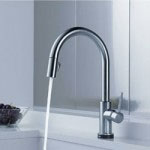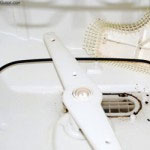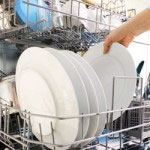Thank you for using
Platinum services
We will send you a link for accessing your service request to the email:
If you haven’t received an email with a link to your dispatch, please make sure you have a Super account with the email you entered and that you supplied the correct confirmation number.
still no link?
Give us a call at (844) 997-8737
Done
Edit Information
Thank you for using
Platinum services
Unfortunately we could not find a claim for the information you provided.
Give us a call at (844) 997-8737
Done
Edit Information
 Click Here To Call Us
Click Here To Call Us
 1. Run hot water before starting the dishwasher.
Before beginning the dishwasher cycle, run your water from your kitchen sink until it is hot to the touch. This will enable your dishwasher to have hot water instantly, instead of cool or lukewarm water. Hot water will help improve the performance of your dishwasher and the cleanliness of your dishes.
1. Run hot water before starting the dishwasher.
Before beginning the dishwasher cycle, run your water from your kitchen sink until it is hot to the touch. This will enable your dishwasher to have hot water instantly, instead of cool or lukewarm water. Hot water will help improve the performance of your dishwasher and the cleanliness of your dishes.
 2. Clean your dishwasher trap
Under the lower sprayer of most dishwashers you will find the dishwasher trap. The lovely thing collects all of the food, plastic and other materials that get left to prevent them from entering the drain.
Cleaning the trap helps keep smells down and increase the cleanliness of your dishwasher.
2. Clean your dishwasher trap
Under the lower sprayer of most dishwashers you will find the dishwasher trap. The lovely thing collects all of the food, plastic and other materials that get left to prevent them from entering the drain.
Cleaning the trap helps keep smells down and increase the cleanliness of your dishwasher.
 3. Clean your dishes before placing them in the dishwasher
For your dishwasher to run its best, you need to do more than barely scrape the food off your plates. Try to give your dishes a gentle cleaning before placing them in the dishwasher. Any particles that remain get stuck in the dishwasher trap and lower the performance of your dishwasher.
For a little extra help in the upkeep of your dishwasher, be sure to order a home warranty. The Platinum warranty plans cover dishwasher breakdowns due to normal wear and tear.]]>
3. Clean your dishes before placing them in the dishwasher
For your dishwasher to run its best, you need to do more than barely scrape the food off your plates. Try to give your dishes a gentle cleaning before placing them in the dishwasher. Any particles that remain get stuck in the dishwasher trap and lower the performance of your dishwasher.
For a little extra help in the upkeep of your dishwasher, be sure to order a home warranty. The Platinum warranty plans cover dishwasher breakdowns due to normal wear and tear.]]> 


